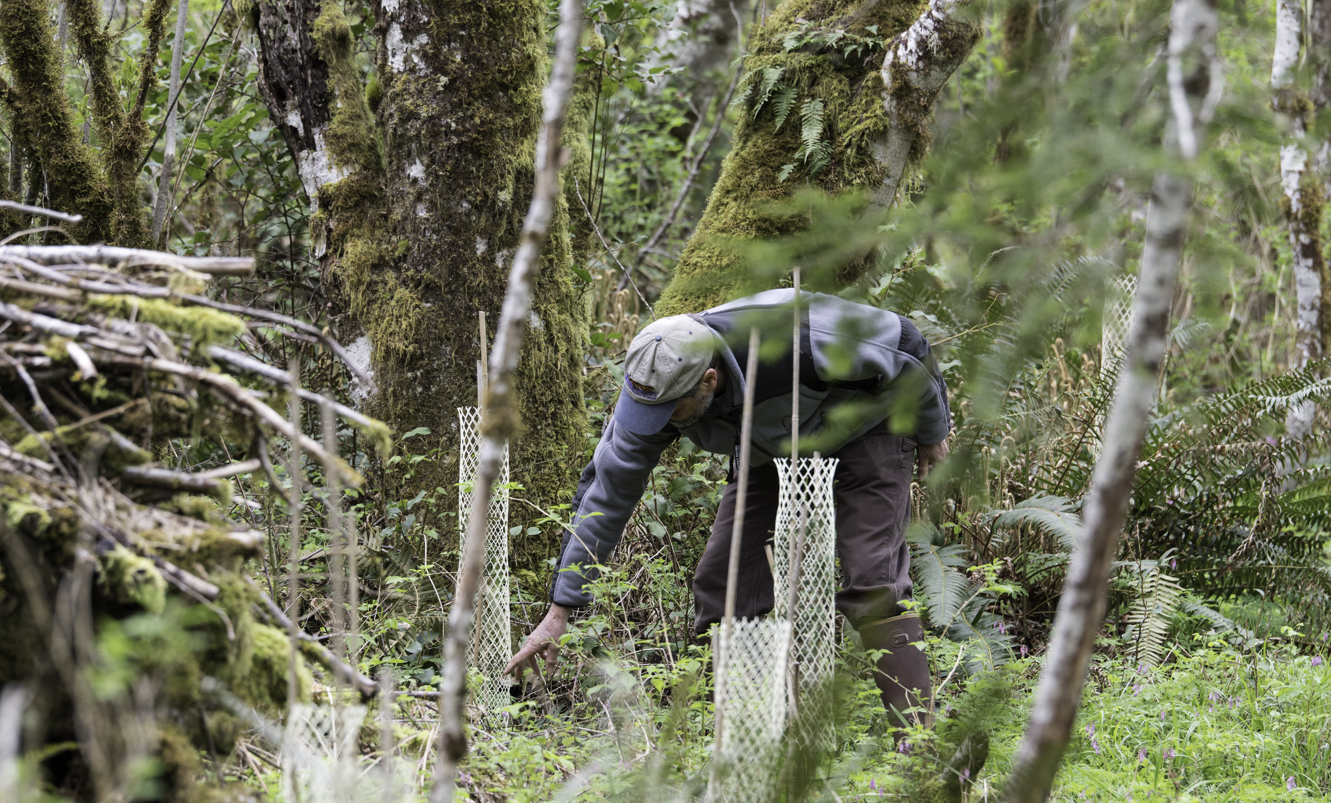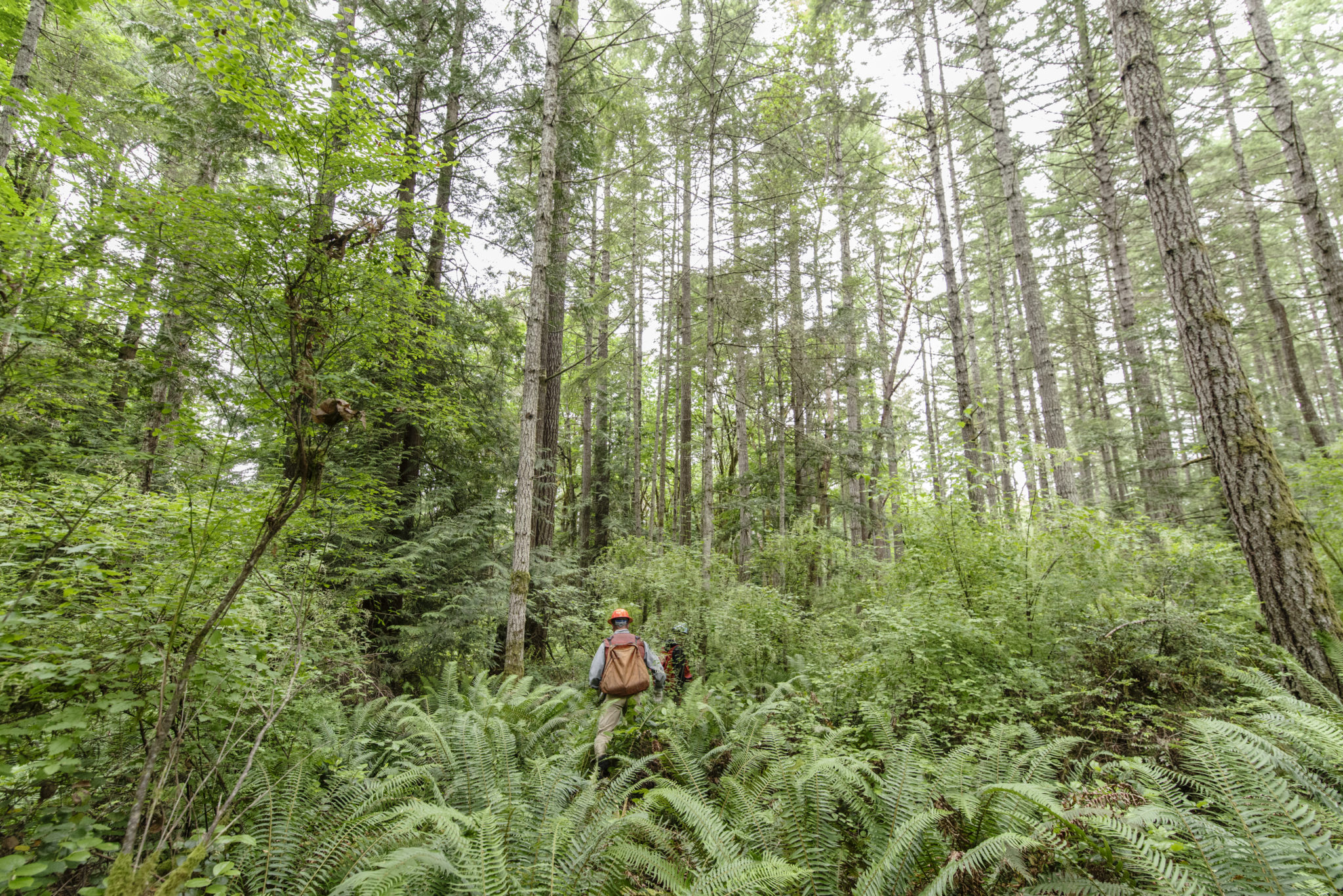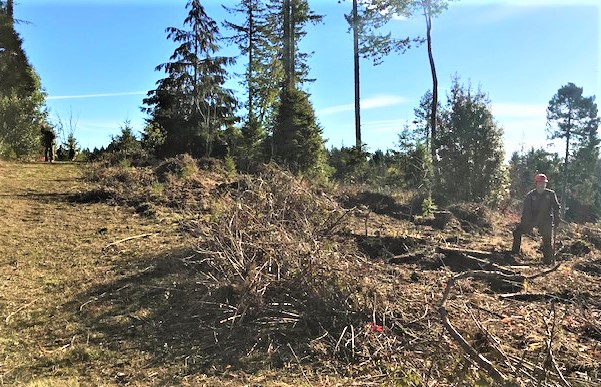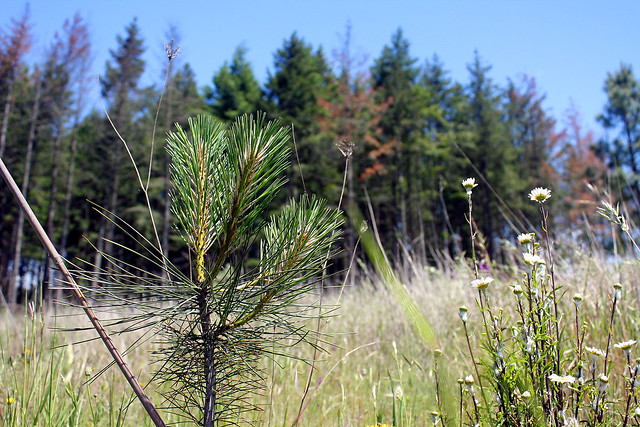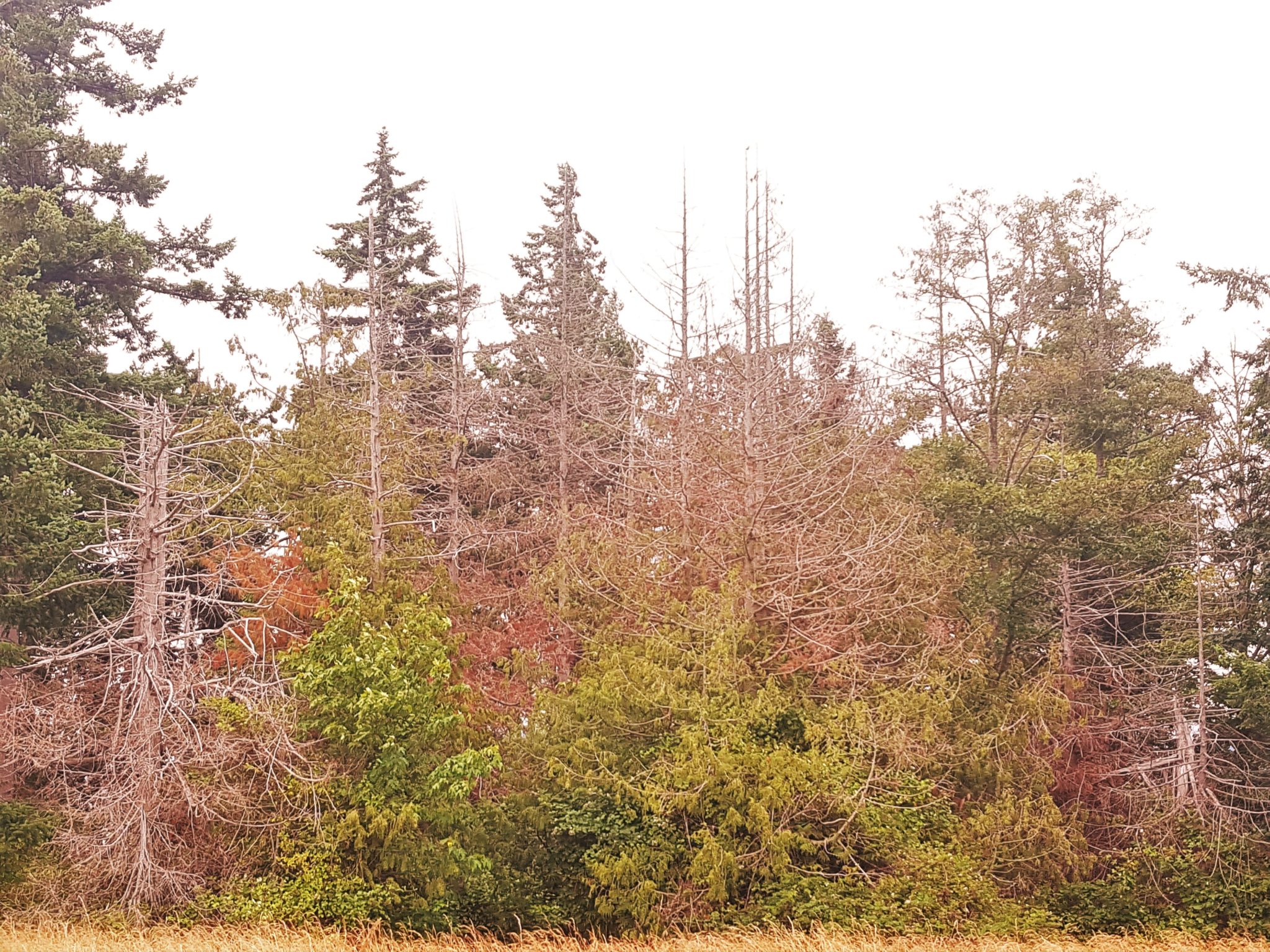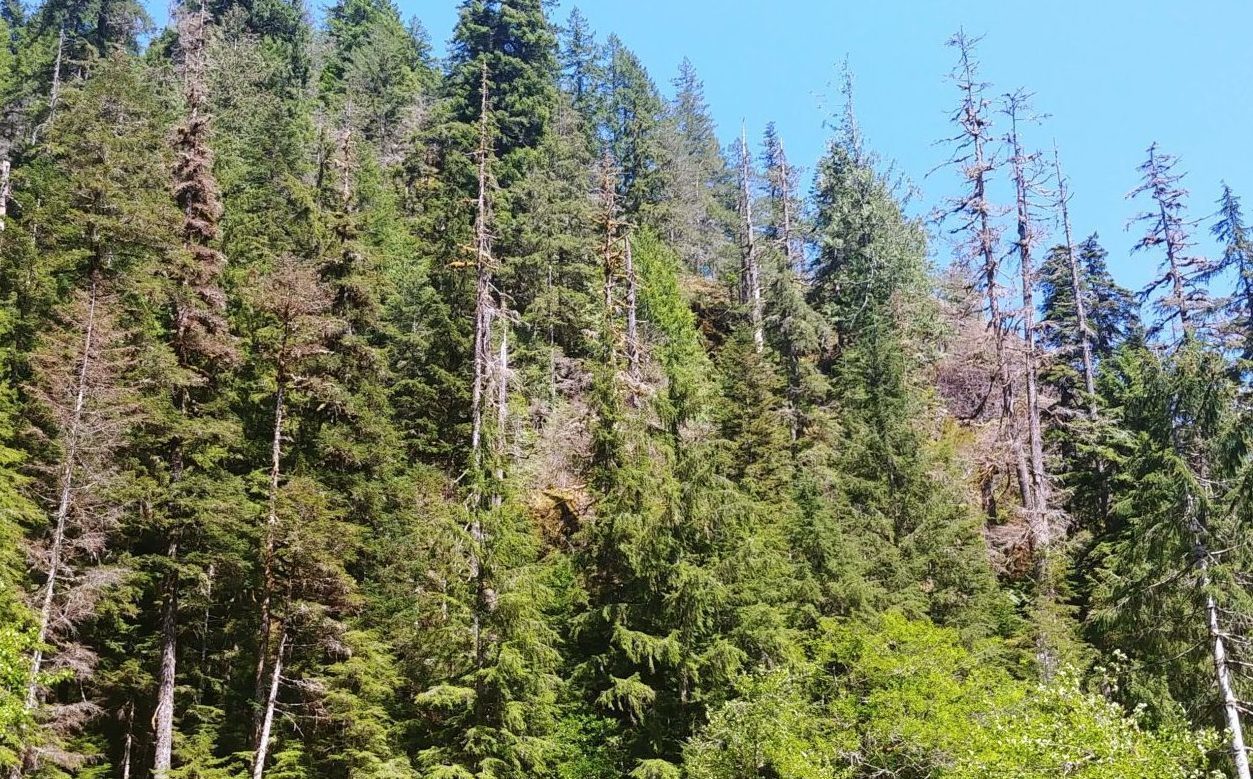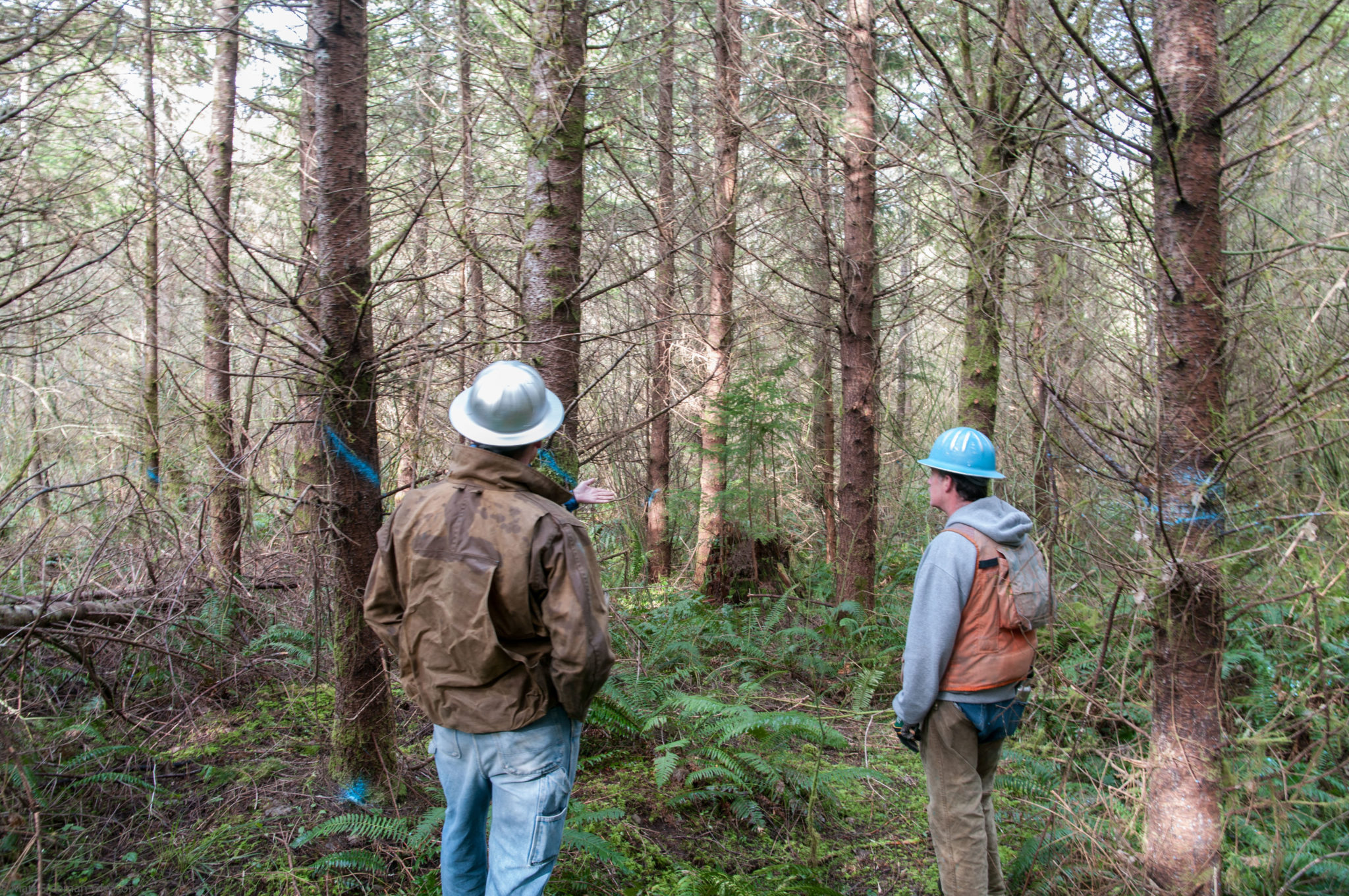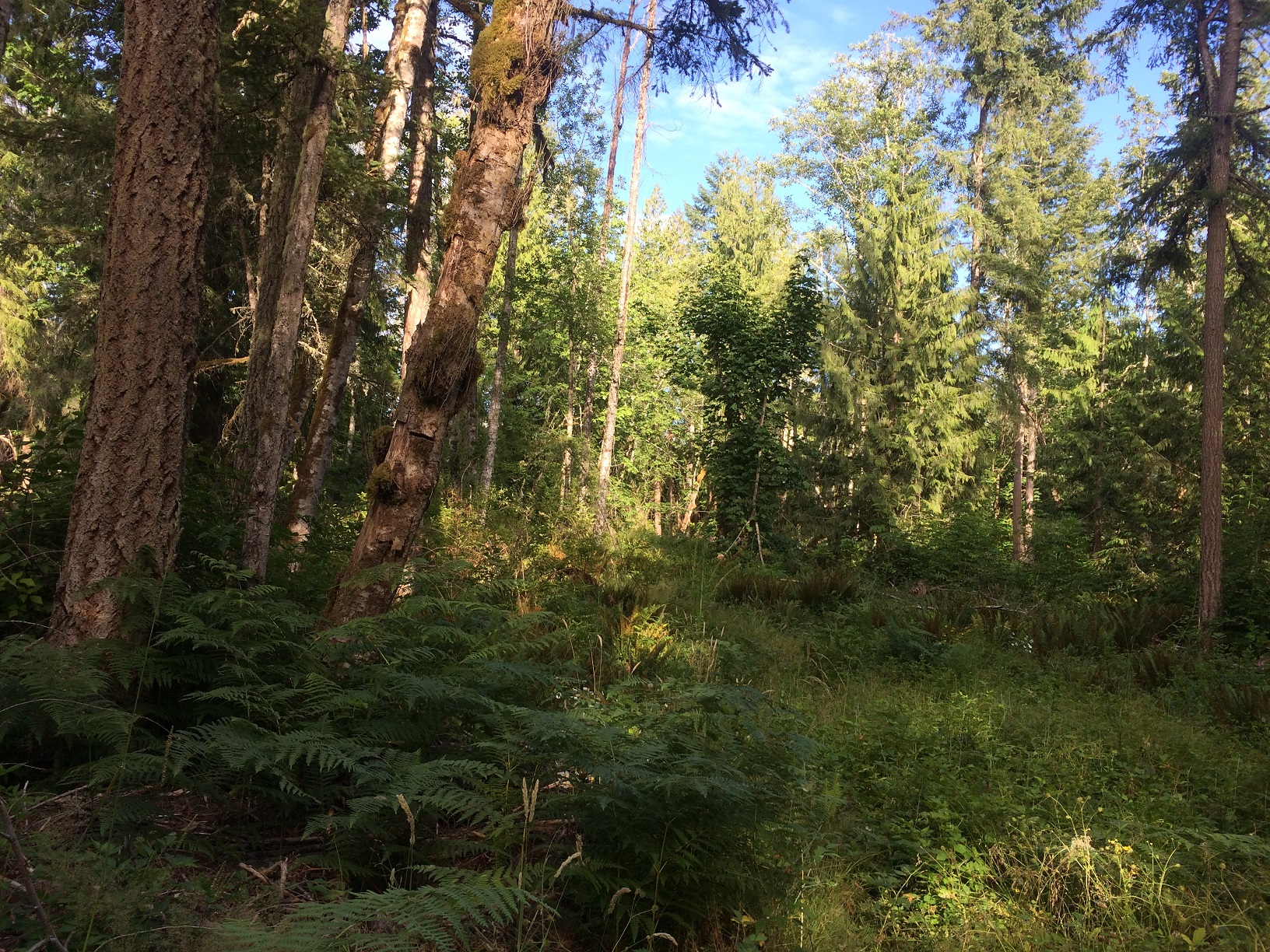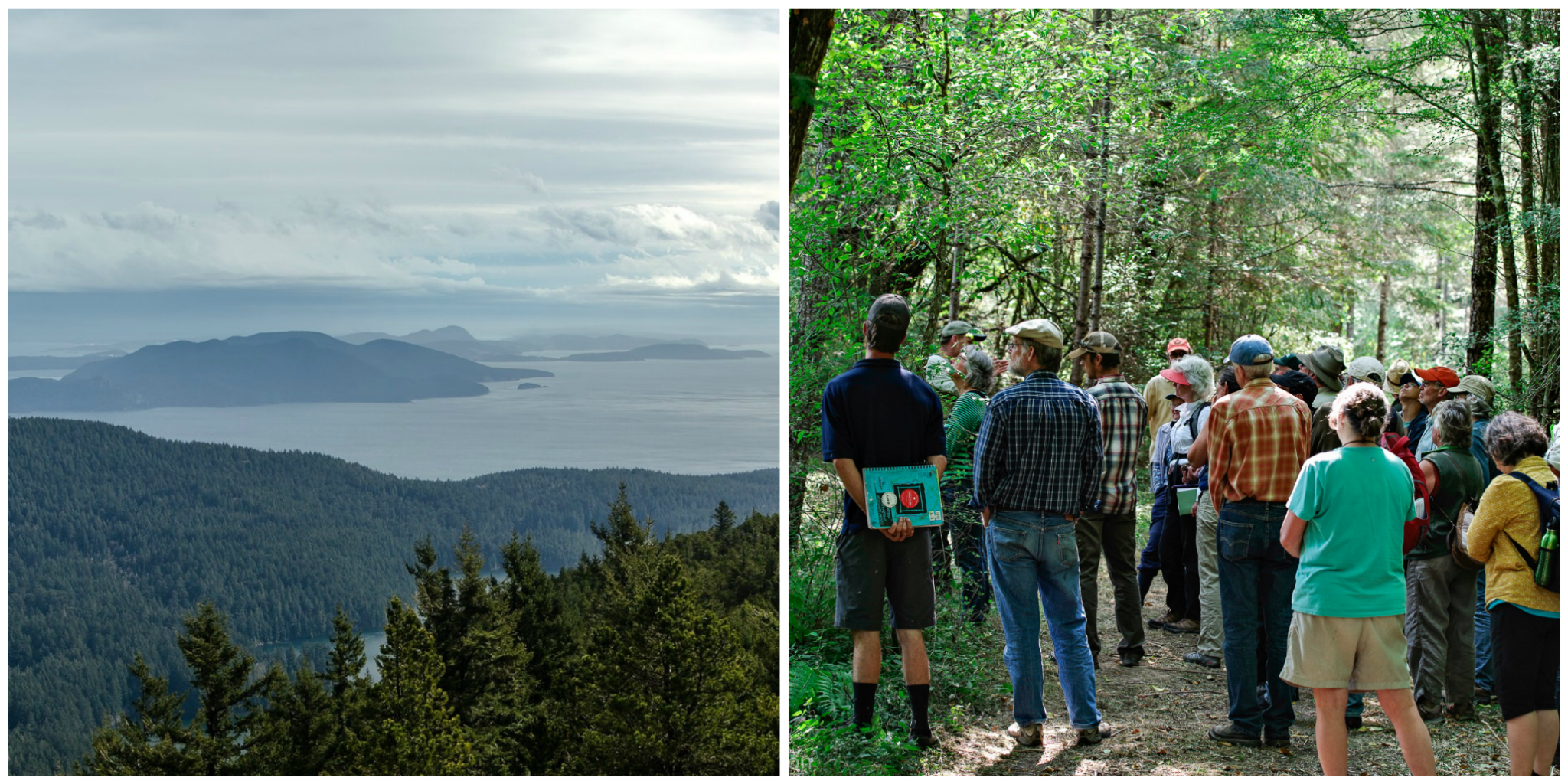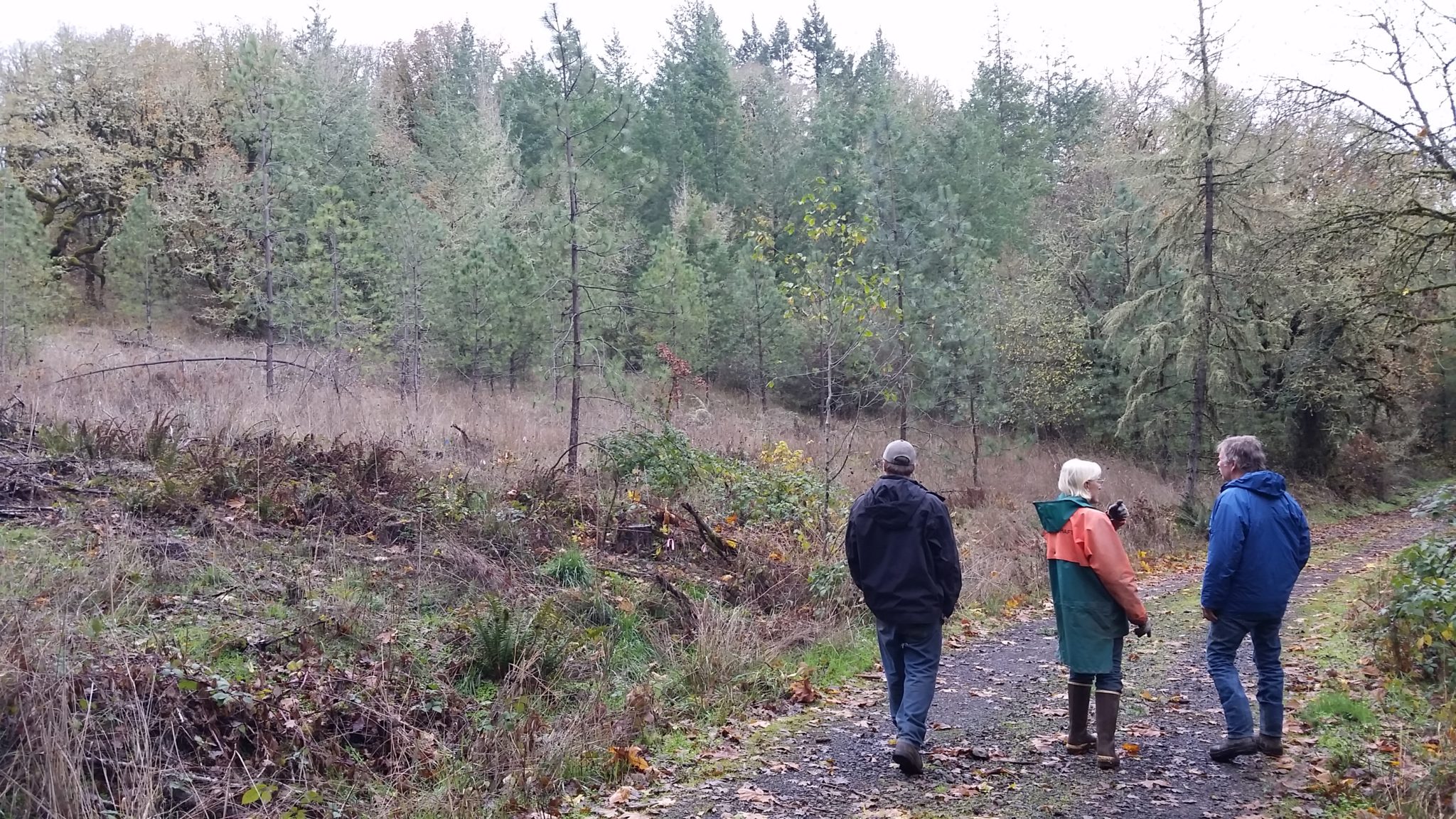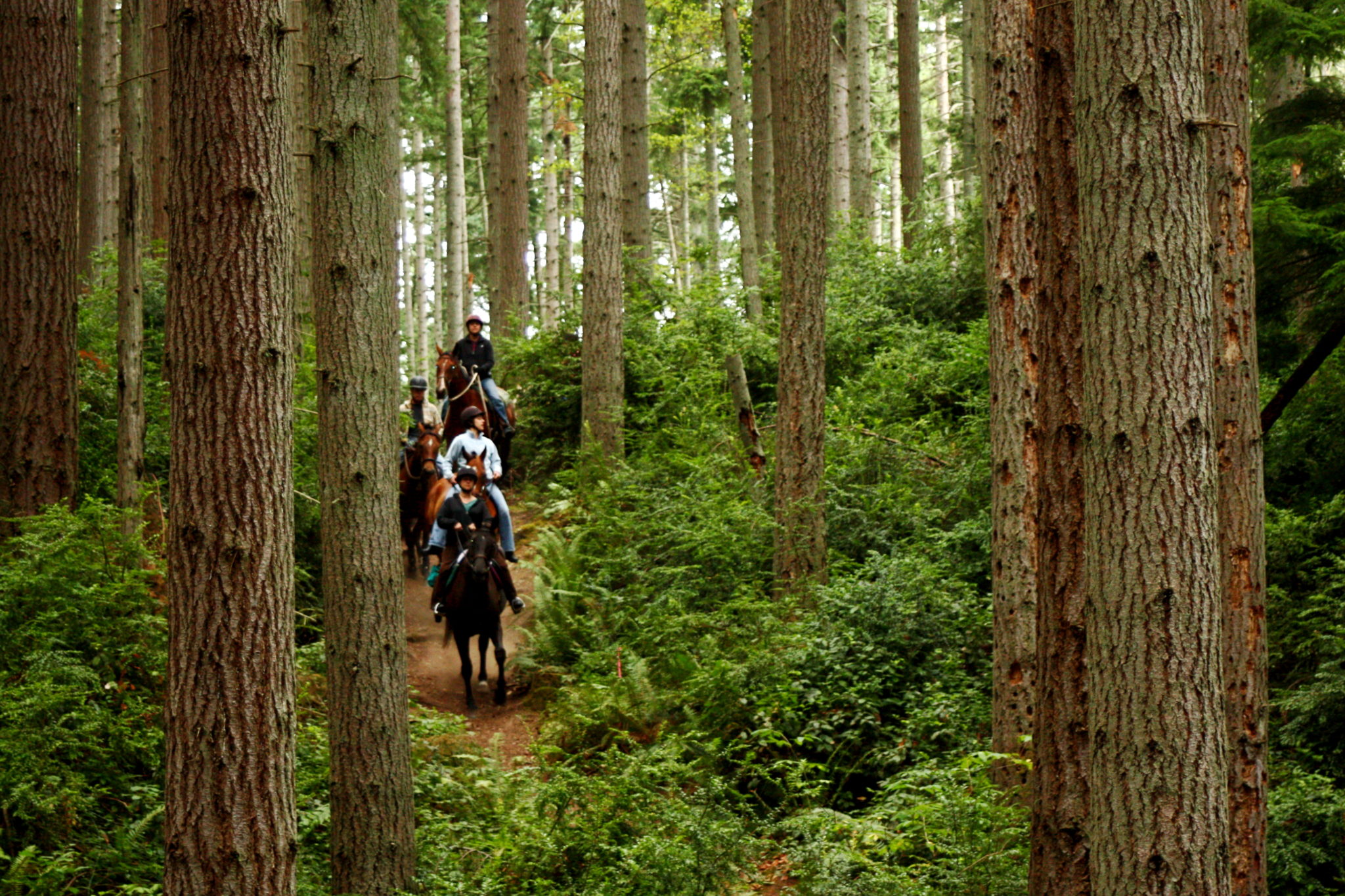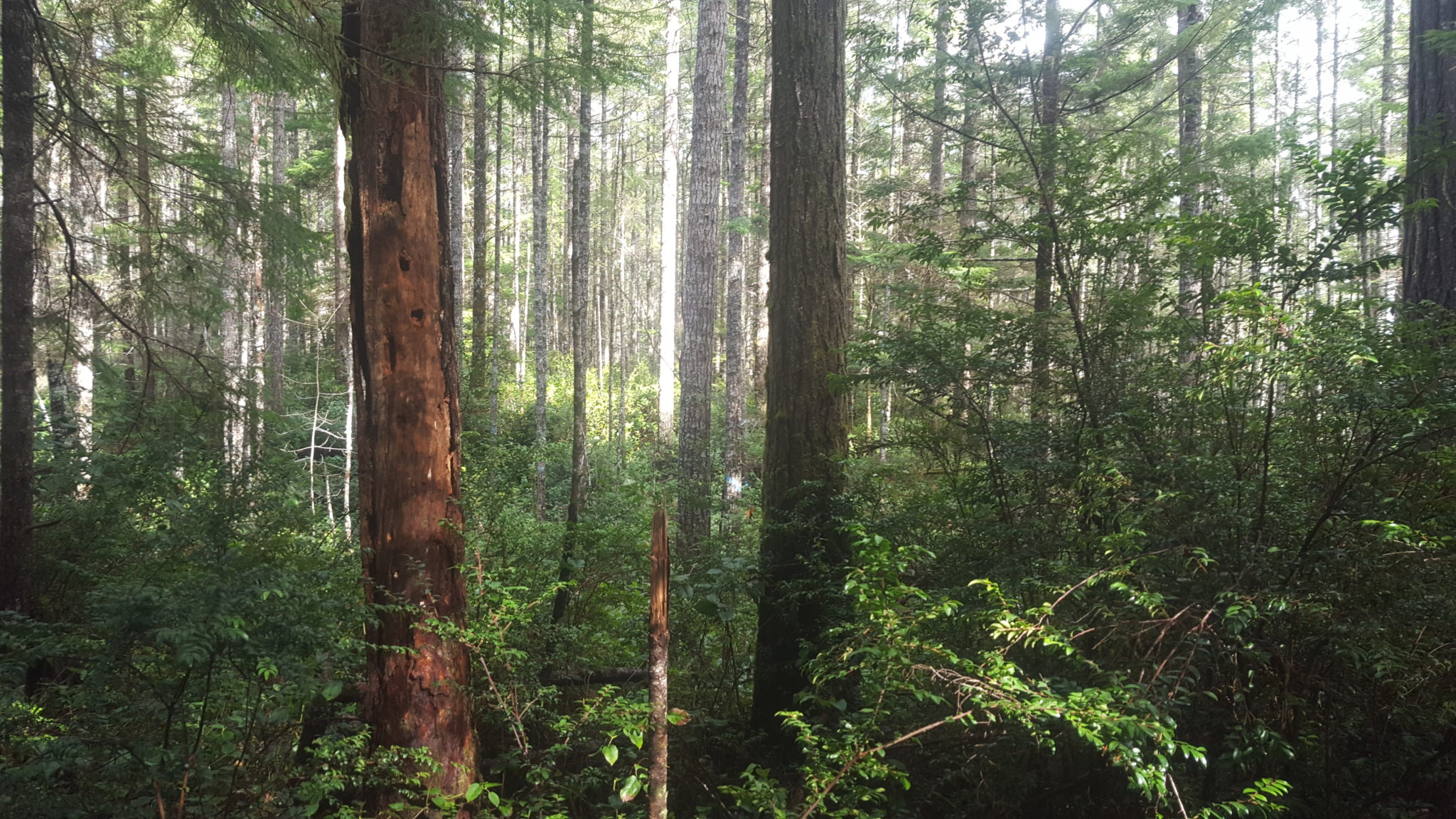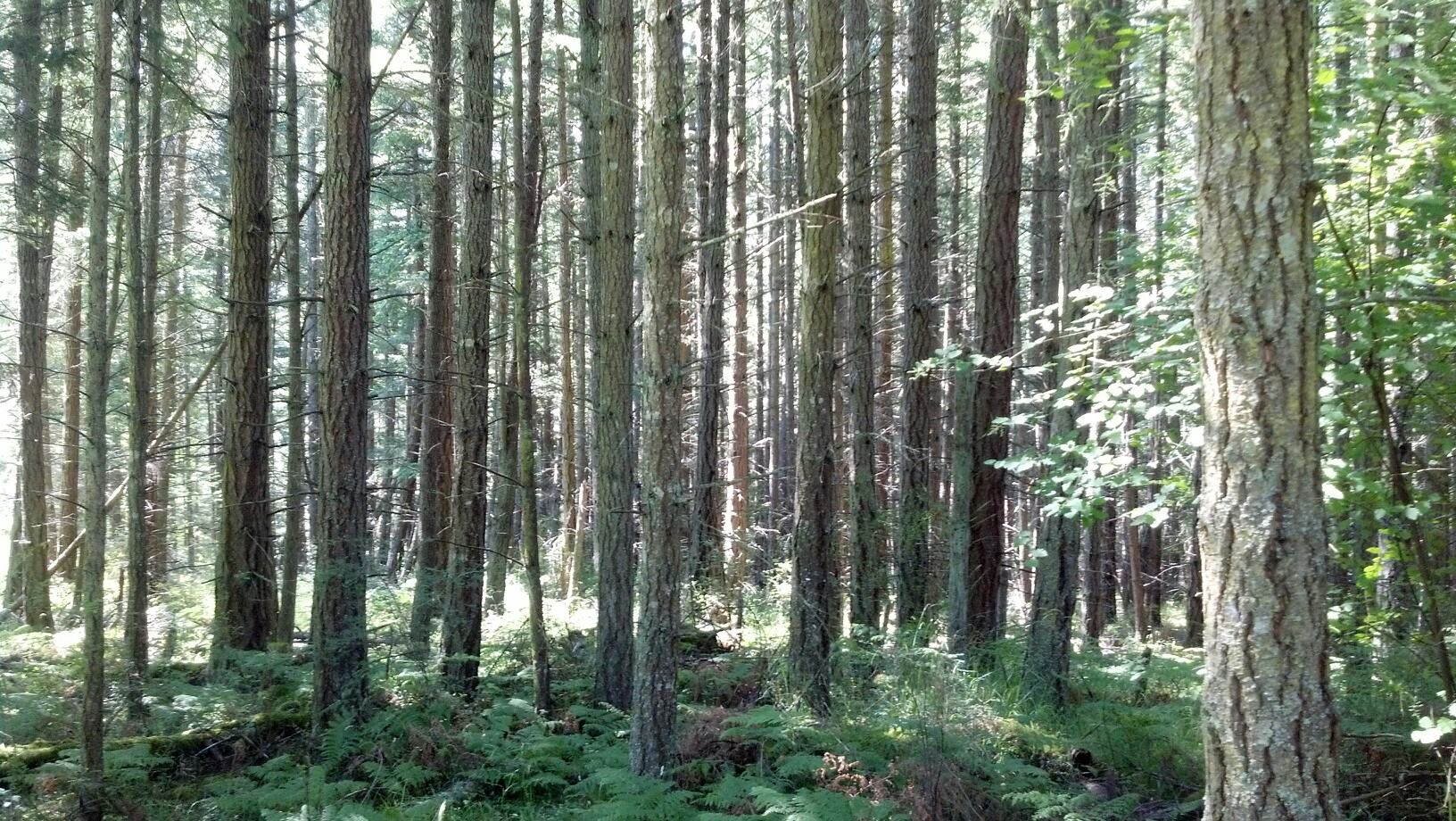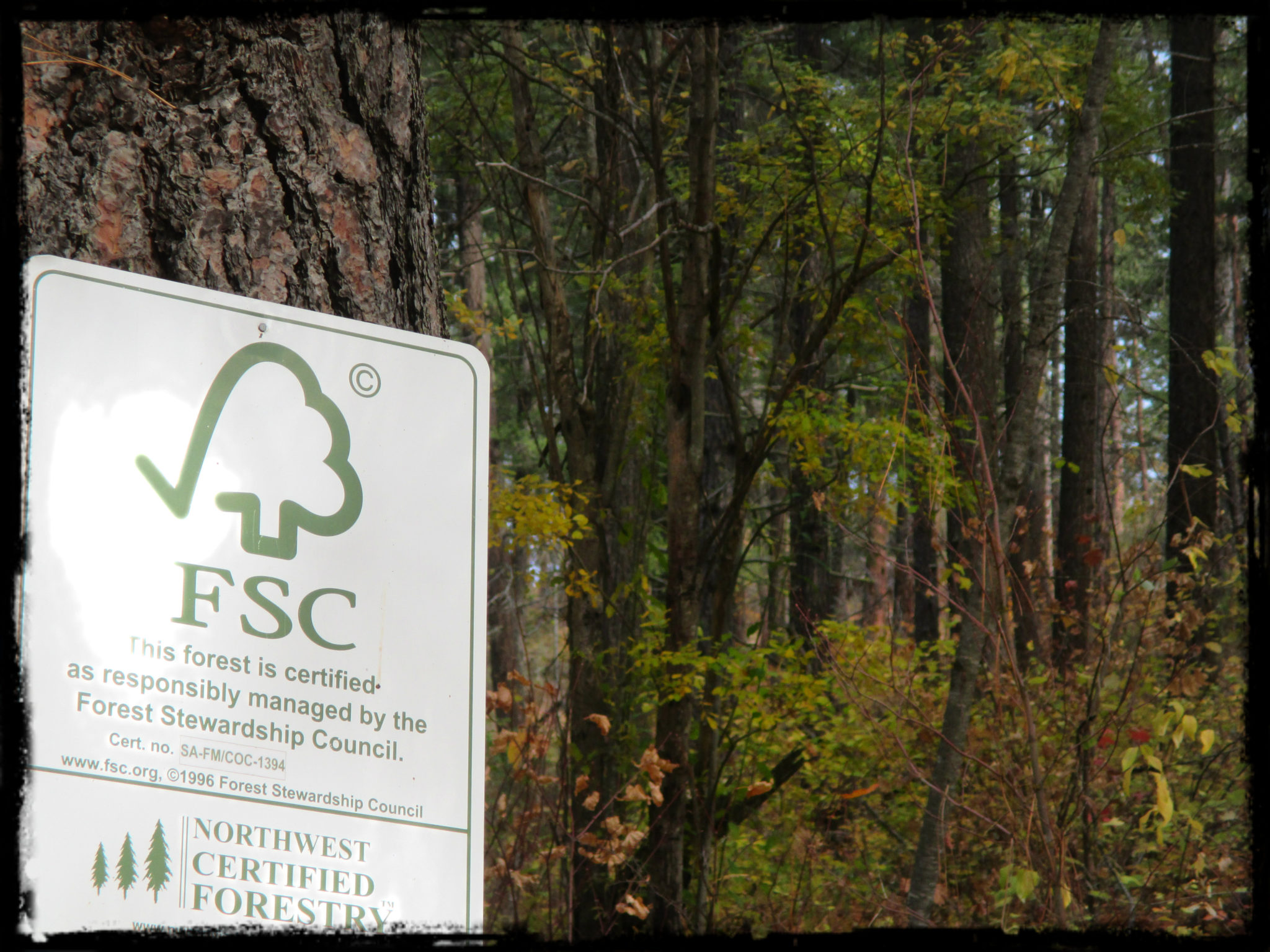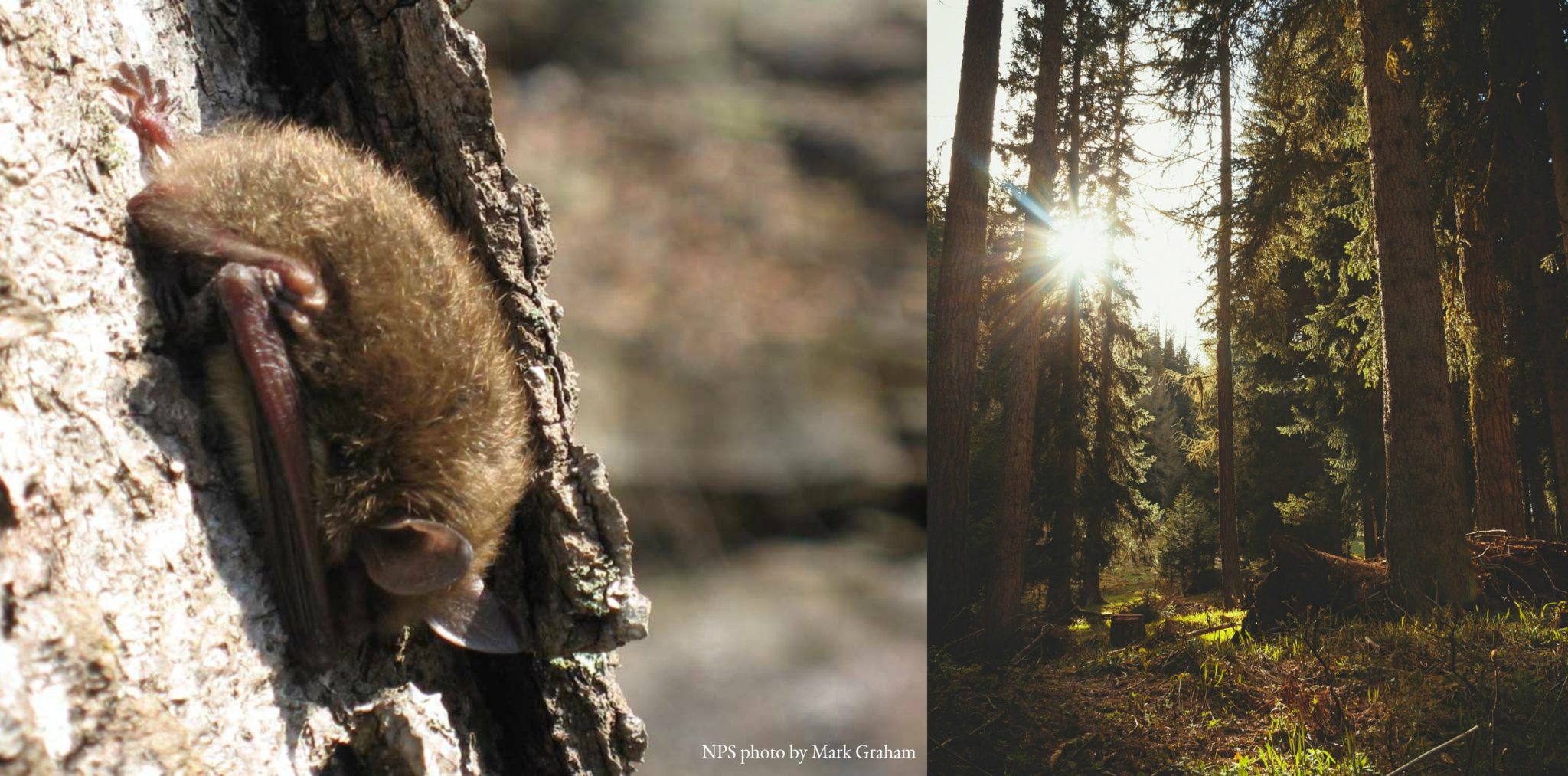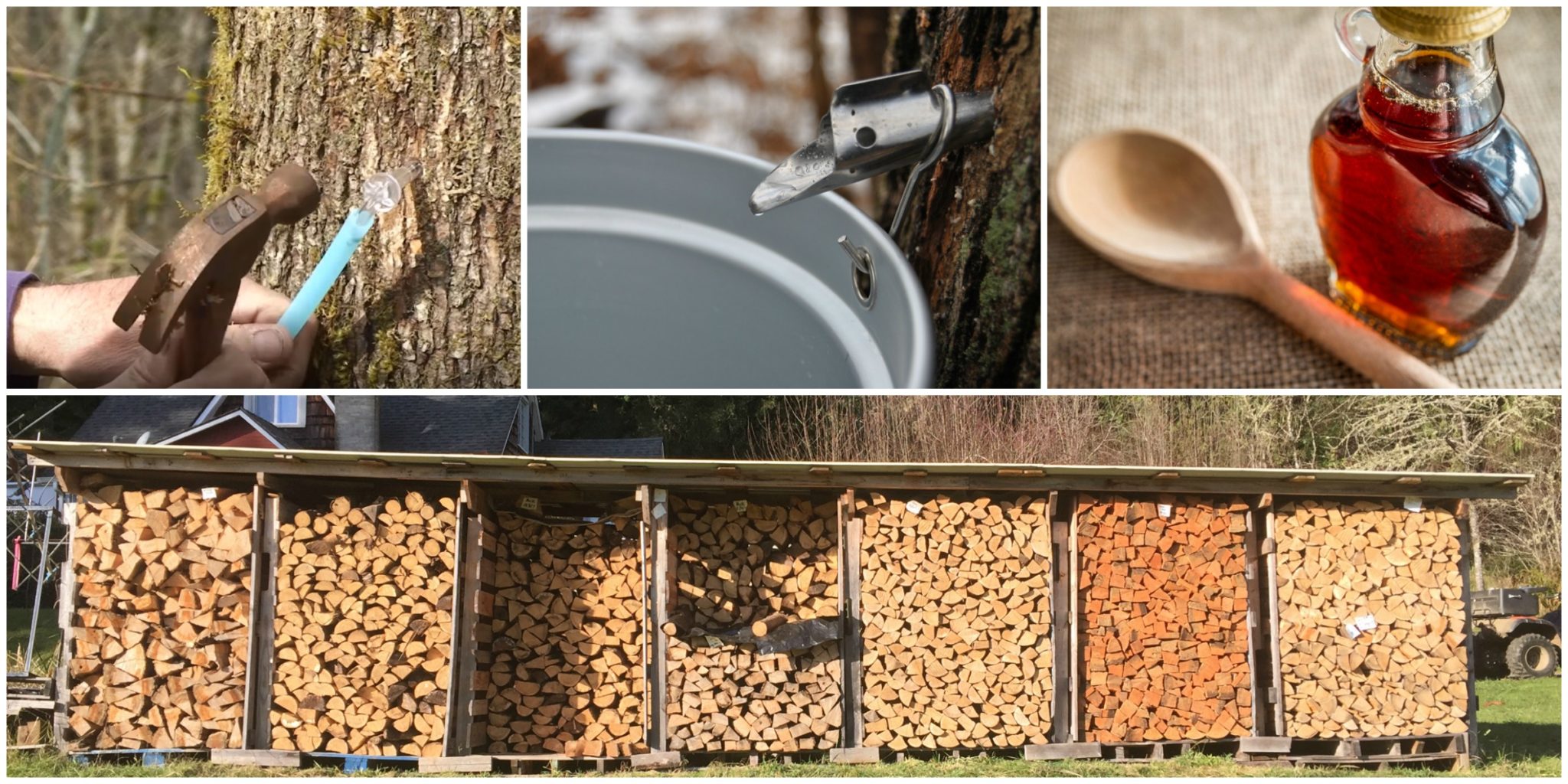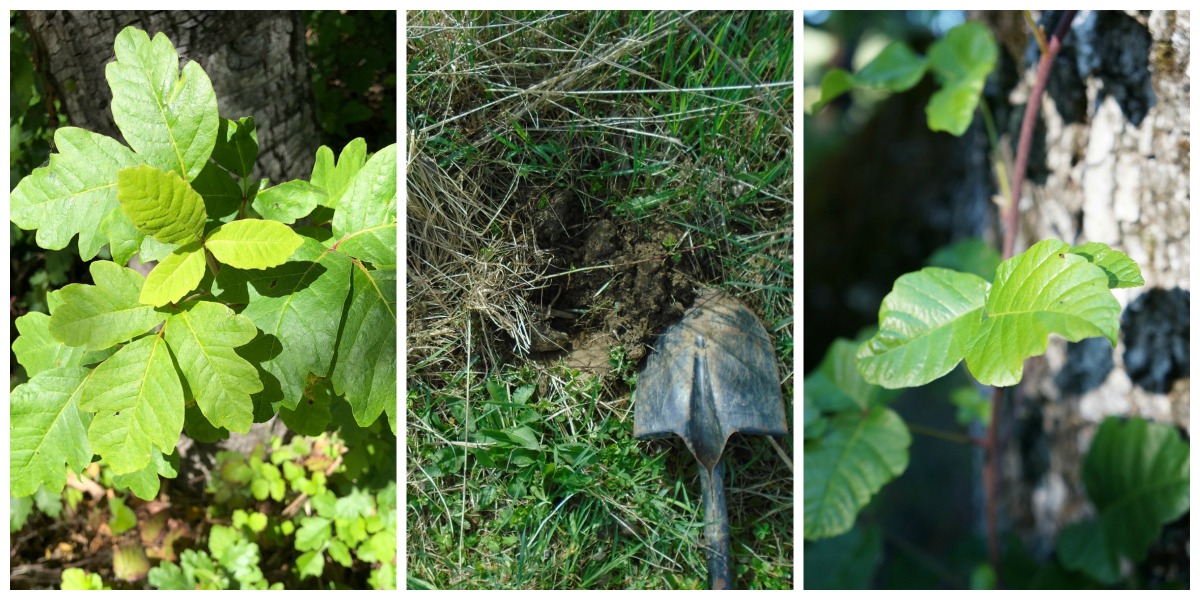There’s a hint of expectation in the air around Lousignont Creek, located in the northern Oregon Coast Range.Sometime in the next two months, adult coho salmon will appear as if out of nowhere and struggle upstream in search of suitable gravel for spawning.
Pointing the Trees in the Right Direction
It isn’t always easy to watch trees come down during a thinning, but Paul and Peggy Butler are getting better at it the second time around.
Welcoming new staff to NNRG
With the turning of the seasons Northwest Natural Resource Group welcomes crunching leaves underfoot, bounties of forest fungi—and two new staff members!
Tackling Invasives Without Chemicals―But Not Without Help
Artemio and Edana Paz have lived on and cared for their forest outside of Springfield for over 50 years. This year for the first time they sought help controlling invasive weeds from a unique source.
Salem Workshop: Climate Adaptation Strategies for Pacific Northwest Forests
Climate change poses significant challenges for small forest owners in the Northwest. NNRG is hosting this workshop to help foresters and other land managers consider climate adaptation concepts and strategies in their management practices to meet their clients’ goals and sustain forests into the future.
Olympia Workshop: Climate Adaptation Strategies for Pacific Northwest Forests
Climate Adaptation Strategies for Pacific Northwest Forests What Natural Resource Professionals and Land Managers Need to Know Climate change poses significant challenges for small forest owners in the Northwest. NNRG is hosting this workshop to help foresters and other land managers consider climate adaptation concepts and strategies in their management practices to meet their clients’ […]
Everett Workshop: Climate Adaptation Strategies for Pacific Northwest Forests
Climate change poses significant challenges for small forest owners in the Northwest. NNRG is hosting this workshop to help foresters and other land managers consider climate adaptation concepts and strategies in their management practices to meet their clients’ goals and sustain forests into the future.
The Rhyme & Reason Behind Pre-Commercial Thinning (aka PCT)
Young-stand thinning (aka pre-commercial thinning or PCT) is a silvicultural practice that entails removing the individual trees that are declining in a forest―often they are smaller and have less robust crowns―and are less than 20 years old.
A Tale of Two Thinnings
Two members of NNRG’s group FSC certficate, Kopel Family Forest and Ferris Family Forest, are both commercially thinning their forests—a strategy that works to achieve both landowners’ goals for their lands.
San Juans Workshop: Improving Forest Health and Fire Resistance in a Changing Climate
At this hands-on workshop at Morningstar Farm, local and regional experts will introduce forest owners to simple, do-it-yourself strategies for thinning their forests, mitigating slash and creating value-added products.
Helping Your Forest Through Dry Times
The drier and hotter years ahead don’t have to spell trouble for the forests you steward. From recognizing and responding to drought stress in trees to planting tree species from other regions, there are steps you can take to mitigate the impacts of climate change in your forest.
Stewarding Woodlands in a Changing Climate
Ben Deumling and his family steward Zena Forest, a member of NNRG’s group FSC® certificate. The largest contiguous block of forest in the Eola Hills of the Willamette Valley, Zena Forest has not been immune to the impacts of climate change. Facing large-scale Douglas-fir die-off, Ben describes below how he and his family are experimenting with planting less-traditional tree species—ones more tolerant to a warming climate.
Seeking Forest Owners for New Study
You know better than anyone what kind of management work you’ve done in your forest, and what sorts of financial and ecological results its produced. Your closest forest-owning neighbor might have taken a different approach but ended up with similar results.
Go Play in One of King County’s Forests
Want to know what a well-managed forest looks like? Walk, run, or ride through one of King County’s forestlands.
Skokomish Tribal Forest Certified
The Skokomish Indian Tribe has earned Forest Stewardship Council® certification for its 2,100-acre forest at the south end of Hood Canal, making it the first tribe in Washington state to gain that endorsement.The Skokomish Tribe join three other Indian tribes in the United States in maintaining FSC® certification: the Coquille Tribe in Oregon, the Hoopa Valley Tribal Council in California, and the Menominee in Wisconsin.
Prepare Your Home and Forest for Wildfire
Fire is as natural a part of Pacific Northwest forests as the rain and sun. And while the type and frequencies of wildfire differs east and west of the Cascades, landowners everywhere can prepare their homes and forests for wildfire if it arrives.
From Tinderbox to Fire-Resilient Forest
Tree by tree, Tierra Learning Center is coaxing 250 acres of dark dense woods into open forests with room for larger trees and resilience to wildfire. Tucked amid the picturesque hills of Sunitsch Canyon, just a few miles up the Chumstick Valley outside of Leavenworth, there is a collaborative community of artists, educators, learners, farmers, and […]
Forest Bats of the Pacific Northwest
Imagine stepping into your forest at night and being utterly swarmed by flies, mosquitoes, beetles, and moths. Glad that’s not the case? Thank a bat. Bats flit through our Pacific Northwest forests every night, but it’s easy to forget they exist. After all, we almost never encounter them (except on October 31st, when they appear […]
NNRG Members Are Harvesting More Than Timber From Their Forests
Finding creative ways to derive enjoyment—and a little extra income—from non-timber forest products. Many forest owners enjoy the pleasures and profits that Non-Timber Forest Products (NTFPs) bring. Broadly speaking, NTFPs are forest products or services aside from commercially harvested timber that have potential personal or commercial value. NTFPs range from foraged berries and mushrooms to holiday wreaths and essential oils, from […]
Prepare Your Forest for a Warmer Future With Rhus diversiloba
As the climate changes, it isn’t enough to think about the species that make up the tree canopy. [Editor’s note: This post first appeared on *wink* April 1, 2019.] We must consider the understory as well — currently composed of a variety of species in western Washington, from devil’s club and skunk cabbage on the […]


